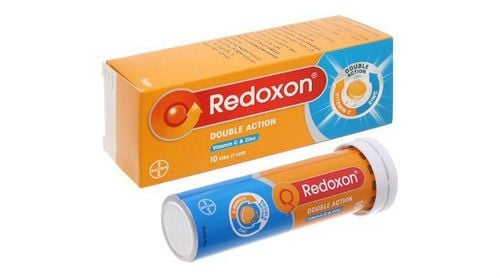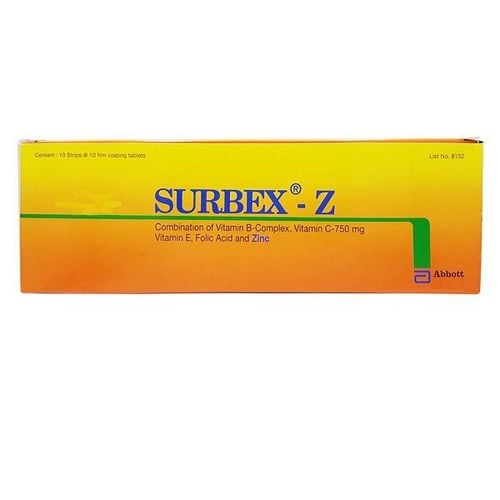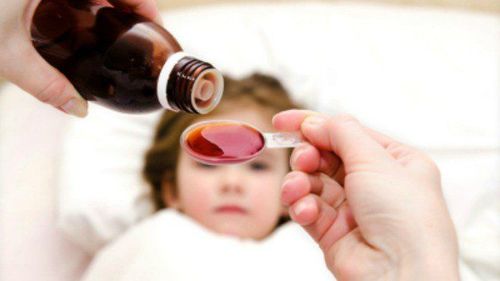Effervescent tablets and regular tablets may have the same effect, but effervescent tablets are often more popular. So, are effervescent tablets faster acting than regular tablets? Let's explore the following information to get the most accurate answer.
1. What are Effervescent Tablets?
Effervescent tablets are medications formulated similarly to hard tablets but must be dissolved in a certain amount of water until fully dissolved into a solution before drinking. Effervescent tablets are quite diverse and can be used to treat some common conditions such as:
- Effervescent tablets containing paracetamol (or acetaminophen): Used to reduce fever and relieve pain in conditions such as flu, colds, respiratory infections, etc. The medication can be combined with codeine to increase pain relief effectiveness.
- Effervescent tablets containing vitamins and minerals: Often purchased as over-the-counter medicines to supplement calcium, and vitamins, and improve health.
2. Are Effervescent Tablets Faster Acting Than Regular Tablets?
Although they have the same effects as regular tablets, effervescent tablets are more popular. This is because effervescent tablets often have an appealing taste, are easier to drink, and act faster than regular tablets. This is particularly true for fever reducers, pain relievers, and vitamin supplements.
However, when using effervescent tablets, users also need to understand the basic information and have some knowledge about the medication to avoid overdose or worsening chronic conditions.
3. Advantages of Effervescent Tablets
When using effervescent tablets, you will easily notice the following advantages of this form of medication:
3.1 Ease of Use
Effervescent tablets are dissolved in water to create a solution that supplements essential body substances, depending on the purpose of each type. Effervescent tablets often contain added coloring and flavoring (orange, lemon, mint, etc.) to create appeal and taste when drinking. This also helps the body absorb the medication faster.
Effervescent tablets are especially suitable for people with difficulty swallowing, such as the elderly and children.
3.2 Fast Action
Are effervescent tablets faster acting than regular tablets? The answer is yes. Effervescent tablets are dissolved in water and, when ingested, are absorbed more quickly into the stomach than regular tablets or capsules.
Therefore, taking effervescent tablets will quickly reduce symptoms (pain, fever) and lead to faster recovery (headaches, joint pain).
4. Disadvantages of Effervescent Tablets
Despite many advantages, effervescent tablets also have some disadvantages:
4.1 Risk of Overuse
Effervescent tablets dissolve in water and are very easy to drink, so they are often overused. In some cases, people who have taken effervescent pain relievers or fever reducers may also take other forms of paracetamol, leading to paracetamol overdose.
Another form of effervescent tablet that is often overused is vitamin C. The daily amount of vitamin C needed is 60-100mg, but if you take a high dose of 1,000mg of vitamin C, just one tablet is enough. However, excessive supplementation can lead to certain health issues, such as gastrointestinal ulcers kidney stones, etc.
4.2 Storage Difficulties
Effervescent tablets need to be stored in a dry place and kept away from moisture to prevent them from absorbing humidity and silently breaking down, which can compromise their quality. Therefore, storing effervescent tablets requires more care compared to medications in other forms.
5. Conditions in Which Effervescent Tablets Should Not Be Used
Although effervescent tablets are fast-acting and easy to use, they are not suitable for all medical conditions. Below are some conditions in which effervescent tablets must not be used:
5.1 Hypertension
People with hypertension who are taking regular medication should not take effervescent fever reducers, pain relievers, or vitamin supplements.
The reason is that effervescent tablets contain some effervescent agents such as sodium bicarbonate or sodium bicarbonate and vitamin C. When effervescent tablets are placed in water, a chemical reaction occurs between the acid and the alkali, forming table salt and CO2 gas bubbles in the drug solution. Thus, effervescent tablets added to water will create a table salt component that will cause an increase in blood pressure for people who already have hypertension.
5.2 Kidney Failure
People with kidney failure often have to eat a lower-salt diet than usual; when kidney failure is accompanied by edema, they must eat a completely salt-free diet. Therefore, effervescent tablets should not be used because after the effervescence process, a certain amount of table salt will be formed, and this additional salt will worsen the condition.
6. Precautions When Using Effervescent Tablets
To use effervescent tablets safely and effectively, users need to adhere to the following:
- Only use effervescent tablets that are intact. If it is effervescent powder, the tin foil packaging must be intact. If the packaging is torn or the medicine is moldy, it must be discarded.
- Only drink after the medicine has completely dissolved in water. Do not put the medicine directly into your mouth to swallow, and do not break the effervescent tablet into smaller pieces.
- The medicine may cause a feeling of bloating due to excess gas, constipation, or diarrhea, so you should not use effervescent tablets after drinking carbonated beverages.
The information above explains how to use effervescent tablets correctly and highlights important precautions. Hopefully, this helps everyone understand their benefits and drawbacks, as well as the proper and effective way to use effervescent tablets.
To arrange an appointment, please call HOTLINE or make your reservation directly HERE. You may also download the MyVinmec app to schedule appointments faster and manage your reservations more conveniently.
To arrange an appointment, please call HOTLINE or make your reservation directly HERE. You may also download the MyVinmec app to schedule appointments faster and manage your reservations more conveniently.








